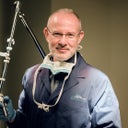I am considering BA and am concerned about biofilm infection and capsular contracture. I ask because I developed a biofilm when I had my lips augmented with Juvederm. Are some individuals more prone to this? Because of my history with fillers am I at elevated risk for biofilm or contracture if I go forward with breast implants?
Answers (8)
From board-certified doctors and trusted medical professionals
Dr. Ronald J. Edelson, MD

Dr. Ronald J. Edelson, MD
Board Certified Plastic Surgeon
Answer
Dr. Gerald Minniti, MD, FACS

Dr. Gerald Minniti, MD, FACS
Board Certified Plastic Surgeon
Answer
Dr. Gregory A. Wiener, MD, FACS

Dr. Gregory A. Wiener, MD, FACS
Board Certified Plastic Surgeon
Answer
Dr. Manish C. Champaneria, MD

Dr. Manish C. Champaneria, MD
Board Certified Plastic Surgeon
Answer
Dr. Johnson C. Lee, MD
Dr. Johnson C. Lee, MD
Board Certified Plastic Surgeon
Answer
Dr. Robert T. Buchanan, MD (retired)
Dr. Robert T. Buchanan, MD (retired)
Board Certified Plastic Surgeon
Answer
Dr. Jon A. Perlman, MD (retired)
Dr. Jon A. Perlman, MD (retired)
Board Certified Plastic Surgeon
Answer
Dr. Robert A. Hardesty, MD, FACS - Account Suspended
Dr. Robert A. Hardesty, MD, FACS - Account Suspended
Board Certified Plastic Surgeon
Answer
More Breast Implants Questions
See all Breast Implants Q&AWE SEND PRETTY
EMAILS
What’s trending? Who’s turning heads? Which TikTok myths need busting? We’ve got you. No fluff, no gatekeeping—just real talk. Get our free, unfiltered newsletter.